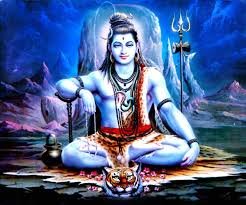(An auspicious time to receive blessings from Lord Shiva)
Whenever his beloved devotees run into predicaments, Lord Shiva pleased with their devotion Himself destroys their troubles. Maha Shivratri (The great night of Shiva) is one of the most auspicious Hindu festivals, celebrated every year on the thirtieth night in the Krishna Paksha in February. It’s the night when devotees worship and offer prayers to Shiva who destroys the darkness of ignorance.
Many mythological legends shed light on the significance of this festival. Maha Shivratri connotes the divine marriage of Lord Shiva and His consort Shakti aka Goddess Parvati. The festival is also marked to honor Tandava, the cosmic dance.
One of the legends says that Shiva rescued the world from a great annihilation which was caused by a poison emanating from Samudra Manthan; the churning of the sea. Shiva drank the poison holding it in his throat with yogic powers. As a result his neck turned blue and henceforth he was called Neela Kantha, Neela means blue and Kantha means throat.
The most famous mythological tale is about a hunter. A tired hunter of Varanasi after killing game birds sat down below a tree to rest in an evening. He woke up and found it was all dark around him. He didn’t know that it was the night of Maha Shivratri. He climbed up the tree and tied the bund of game birdd to a branch. A Lingam stationed under the tree could not come to his notice. And the tree was Lord Shiva’s favorite, the Bilva tree. Accidently, he plucked and dropped a few leaves. Also, dew that formed on his body too trickled along with the leaves down onto the Lingam. Such an event pleased Lord Shiva. Later in life, the hunter died calling the death god Yama who decided to take him to Hell. At the same time, Lord Shiva sent his messengers to take the hunter to Him. A great fight between the men of Yama and Shiva ensued leading the defeat of Yama. At the request of Shiva’s devotee Nandi, Yama surrendered the hunter to Shiva learning that no devotees should be touched without the divine consent of Lord Shiva.
Maha Shivratri witnesses huge convergences and congregations at Shiva’s temples wherein devotees engage in scared rituals pouring water/milk onto the Shiv Ling in order to please Him. When pleased, the Lord blesses them the fulfillment of all desires.
The Shiva Purana mentions the rituals and prayers to be performed on this day. The Ling should be offered milk, honey and water. Vermilion paste signifying divine virtue should be marked on the Ling followed by the presentation of fruits, incense sticks, a lamp and betel leaves.
Anyone can perform this simple rite and please Lord Shiv who always blesses His devotees!






